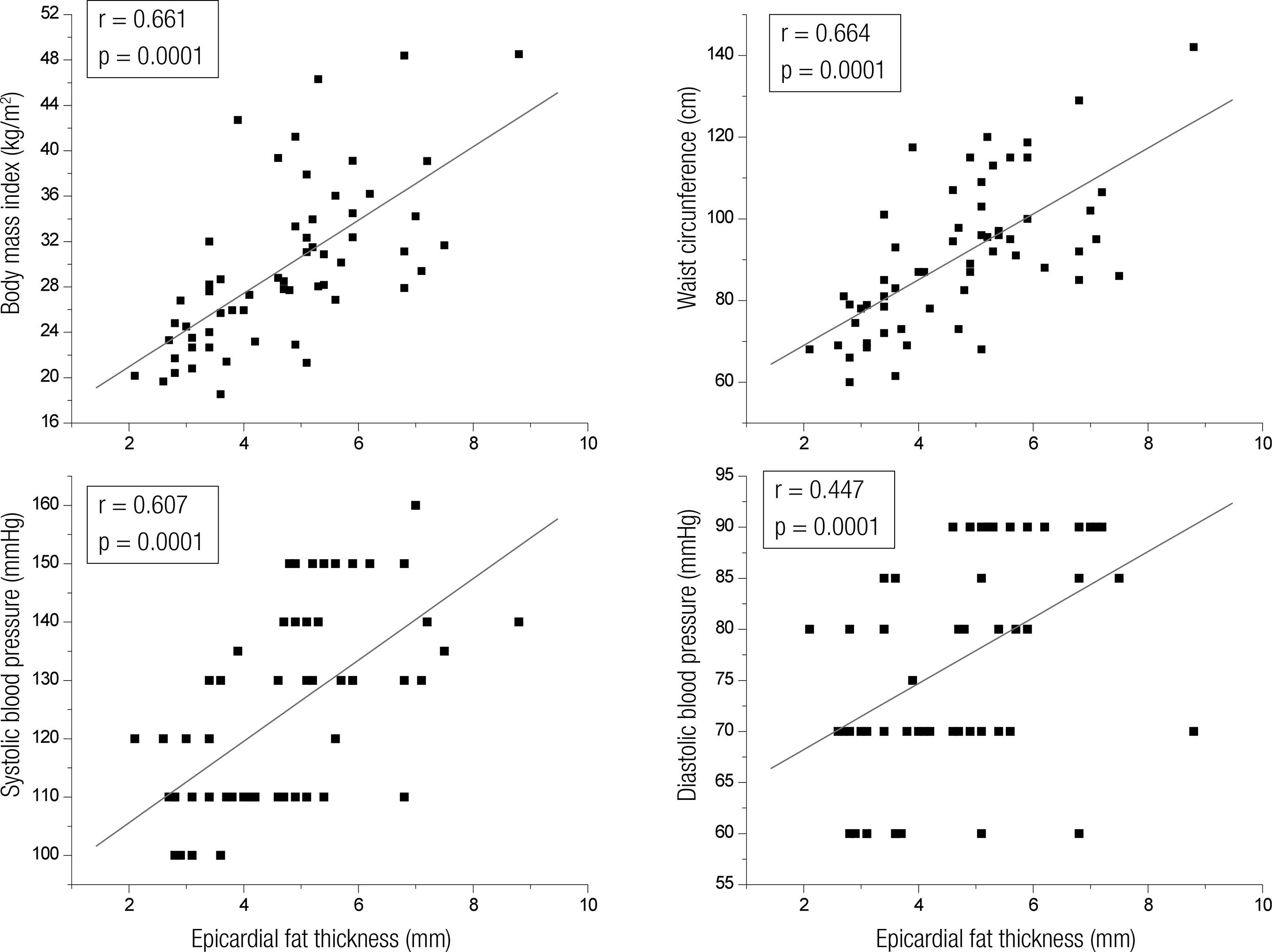Objective:
To study the relationship between epicardial adipose tissue (EAT) thickness and plasma levels of adiponectin in Venezuelan patients.
Subjects and methods:
Thirty-one patients diagnosed with metabolic syndrome (study group) and 27 controls were selected and tested for glycemia, lipids, and adiponectin. EAT thickness, ejection fraction, diastolic function, left ventricular mass (LVM), and left atrial volume (LAV) were determined by transthoracic echocardiography.
Results:
EAT thickness was greater in metabolic syndrome patients (5.69 ± 1.12 vs. 3.52 ± 0.80 mm; p = 0.0001), correlating positively with body mass index (BMI) (r = 0.661; p = 0.0001); waist circumference (WC) (r = 0.664; p = 0.0001); systolic (SBP) (r = 0.607; p = 0.0001), and diastolic blood pressure (DBP) (r = 0.447; p = 0.0001); insulin (r = 0.505; p = 0.0001); Tg/HDL-C ratio (r = 0.447; p = 0.0001), non-HDL-C (r = 0.353; p = 0.007); LAV (r = 0.432; p = 0.001), and LVM (r = 0.469; p = 0.0001). EAT thickness correlated negatively with adiponectin (r = -0.499; p = 0.0001).
Conclusion:
A significant association exists between EAT thickness and both metabolic syndrome components and adiponectin concentration, a link that might be used as a biomarker for this disease.
Epicardial adipose tissue; epicardial fat; metabolic syndrome; adiponectin; Hispanics



